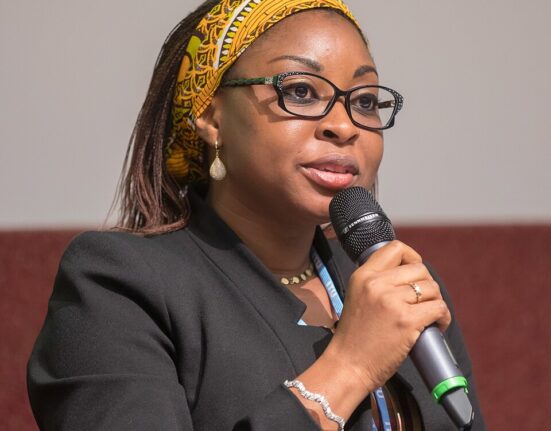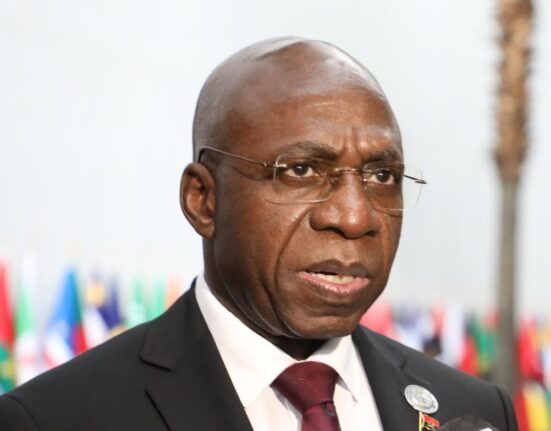Marie Jean Jaques
AfricaHeadline – Tech Desk, Kinshasa
Since its debut in 2007, the iPhone has been more than just a device. It has reshaped communication, redefined consumer technology, and become a symbol of modern life.

AfricaHeadline Reports Team
editorial@africaheadline.com
But behind the polished launches and sleek design lies a more complex reality: dependence on fragile supply chains, allegations of labor exploitation, environmental costs, and geopolitical risks that increasingly define the future of Apple’s most profitable product.
The iPhone’s story is one of cycles of daring innovation and market miscalculations. Landmark models such as the iPhone 4 (2010), iPhone 6 (2014) and iPhone X (2017) reset industry standards, while others, including the iPhone 5C, the mini and the 14 Plus, fell flat.

This week’s unveiling of the iPhone 17 Air fits squarely into that tradition. The thinnest and lightest handset Apple has ever produced, it offers an eSIM-only design and a new form factor. But it comes with trade-offs: a weaker battery, just a single rear camera, and a price squeezed between the mainstream iPhone 17 and the more powerful Pro line. Analysts say it is less a mass-market product than a design experiment, echoing the first MacBook Air in 2008.
Behind every Apple launch lies a supply chain marked by allegations of forced labor in China and child exploitation in Congo’s cobalt mines.
Behind every iPhone are millions of workers whose labor sustains Apple’s supply chain. Rights groups warn that conditions in key factories remain troubling.
China: Facilities run by Apple suppliers such as Foxconn have long faced scrutiny. Recent reports highlight 12-hour shifts, cramped dormitories, and low wages in massive hubs like Zhengzhou, known as “iPhone City.”
Forced labor risks: Watchdog groups continue to flag exposure to coerced labor in some parts of the supply chain, particularly involving ethnic minorities in western China. Apple points to independent audits, but critics say oversight remains limited.
Cobalt in the Democratic Republic of Congo: The DRC provides more than 60% of the world’s cobalt, critical for iPhone batteries. Investigations in 2024 documented child labor in artisanal mines and dangerous conditions for miners, raising questions about the true cost of the smartphone revolution.

These findings cast doubt on Apple’s public commitments to sustainability and human rights.
As the iPhone 17 Air debuts as a design showcase, pressure mounts on Apple to balance technological ambition with social responsibility and sustainability.
The pandemic in 2020 exposed Apple’s dependence on Chinese manufacturing, triggering major supply disruptions. Today, the company has sought to diversify into India and Vietnam, yet more than 70% of iPhone 17 units are still assembled in China.
US-China tensions add another layer of risk. Washington has pressed for “cleaner” supply chains, while Beijing demands compliance with political and censorship requirements. Apple is caught in the middle, navigating pressure from two of its most critical markets.
Each iPhone launch comes with environmental costs: Heavy energy and water consumption at factories; A growing tide of electronic waste, as consumers replace devices every two to three years; Apple’s controversial decision to remove chargers from boxes, billed as a green measure but widely seen as a cost-cutting move;

Experts warn that without structural changes, the push for thinner, more powerful devices risks becoming socially and environmentally unsustainable.
Apple’s history shows a clear pattern: bold products often criticized at launch, followed by later iterations that define the industry standard. The iPhone 17 Air may not sell in large numbers, but it sets the stage for foldables and deeper integration of generative AI.
The challenge now is balancing innovation with accountability. Consumers are demanding transparency, investors are raising concerns about reputational risk, and regulators are investigating supply chain violations.
In the end, the iPhone remains both a global object of desire and a symbol of contradiction: a device that embodies technological progress while still relying on labor practices and environmental trade-offs rooted in the past.








